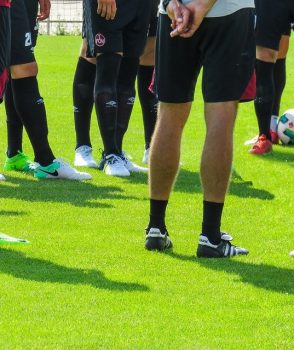During lockdown I’ve been reading around the subject of football coaching as much as I can, and in the process I may have found the best football coaching book ever.
Doug Lemov’s The Coach’s Guide to Teaching looks at the subject of football coaching from a teacher’s point of view. It considers some of the best ‘tricks of the trade’ used by teachers getting the very best results, often against all the odds, in the US High School system and applies them knowledgeably and effectively to football coaching.
Lemov has clearly played football to a pretty decent level and knows the game. He’s also clearly an expert in the field of teaching (the subject of a number of other books he’s written). This expertise enables him to relate the latter to the former clearly and appropriately, with real-life examples that coaches at all levels from grassroots to pro can take into their sessions.
What does the book cover?
The book enlightened me on topics like:
- why visual perception (i.e., seeing things) is the foundation of sporting excellence and why training people to see the right things should be the starting point for coaching skill acquisition
- the best way to approach planning practice sessions (spoiler alert: it’s in blocks of about six sessions, interleaving learning topics to enable people to start forgetting them, counter-intuitively)
- why it’s important to focus on one key point at a time, and make sure your players have learnt it before you move on,
- the importance of developing a shared vocabulary with your players (one of Jesse Marsch’s key principles)
- what kind of questions you should be asking your players (and, conversely, how I’ve been doing it wrong all these years – so many of my previous awkward coaching moments suddenly make sense!)

Lemov has read around his subject in the writing of The Coach’s Guide to Teaching and illustrates his arguments with plenty of scientific theory to back them up. Some of the thinking he draws on is worthy of further examination in its own right, such as Daniel Kahnemann’s Thinking Fast and Slow and Dan Coyle’s The Culture Code.
Who should read it?
Lemov also puts some brilliant pieces of insight into the book from practitioners of the game across a number of sports including basketball and baseball.
And on that point, it’s very likely that coaches of other sports will get plenty out of this book. A lot of the ideas he relates aren’t specific to soccer: they’re universal concepts about how people learn that can apply to a number of other sports (and non-sports, for that matter).

As a result, this book has helped me re-frame my thoughts about cricket coaching, for example, allowing me to get even more value out of the repetitive, fixed practice activities that tend to dominate cricket coaching sessions.
The book is explicitly aimed at coaches at all levels, although it seems most likely to me that grassroots coaches will benefit most. Those working with the youngest age groups will perhaps get the biggest reward as they can start applying Lemov’s precepts as early as possible in their players. But coaches working from the youth development phase through to open age will also take plenty away from this book.
What else can I say?
A few final points I probably want to mention about The Coach’s Guide to Teaching: the author does a great job of summarising the book and its points on a Sports Psych Show podcast with Dan Abrahams, if you want to get more of a flavour about its content and how it could benefit you.
I read the Kindle edition, which isn’t the best for appreciating the illustrations. If you want to enjoy those in full effect, get the paperback version.
In summary, this book blew me away – hence me giving it a blog post of its own – and I’m already seeing the benefits in my coaching sessions now we’re coming out of lockdown.

